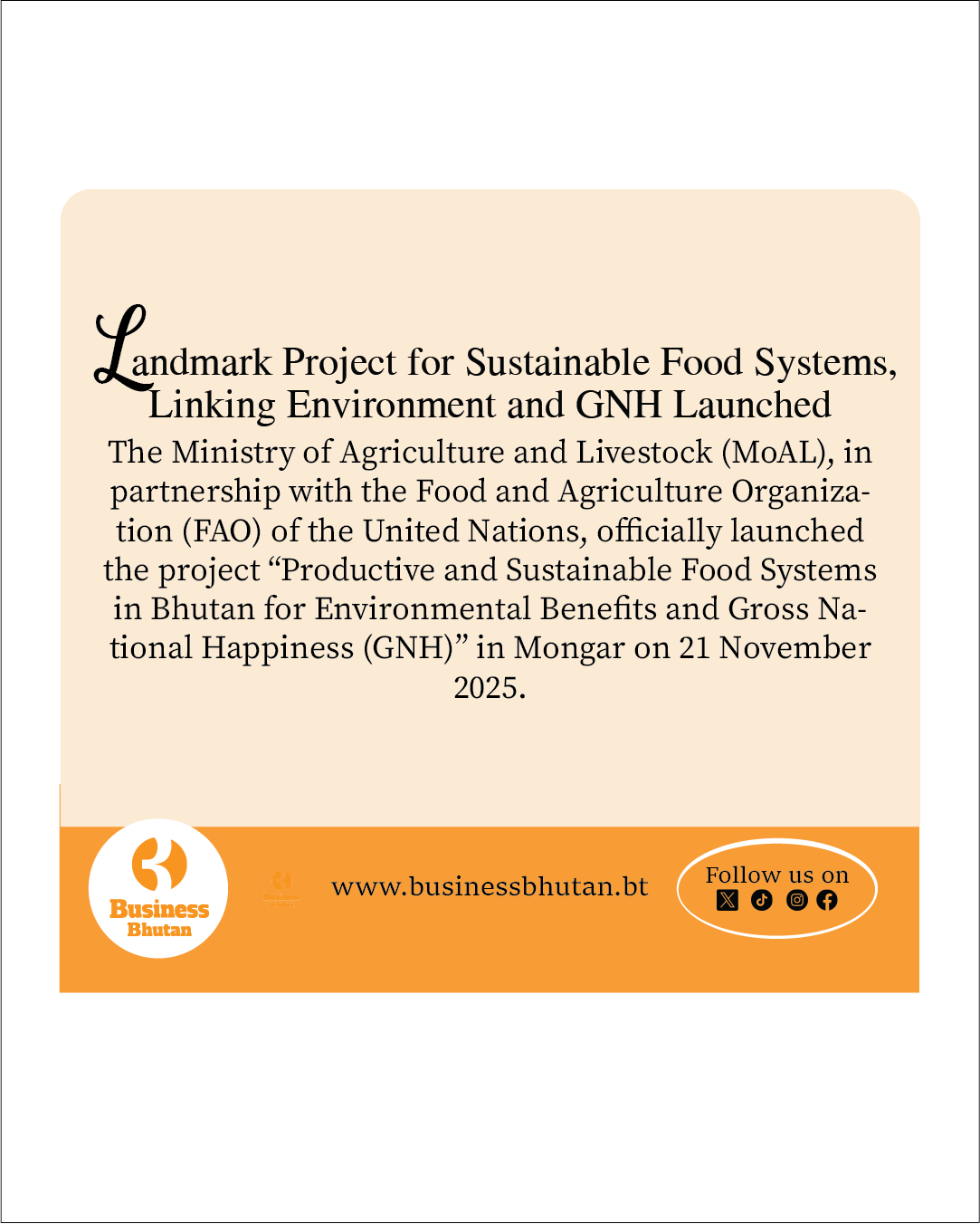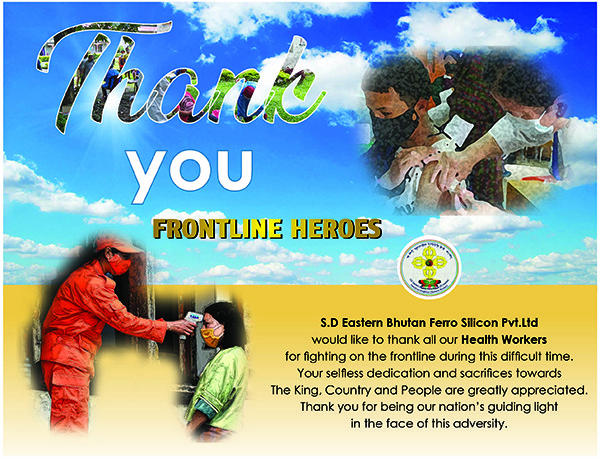The first rays of sunlight spill across the jagged peaks of the highlands as students in thick ghos and kiras make their way to class. The air is crisp, prayer flags dance in the wind, and the sound of laughter echoes across the valley.
Here, more than 3,800 meters above sea level, life moves to a different rhythm—slow, communal, and deeply connected to nature. Yet, what stands out most in Laya is not its remoteness or beauty, but something rarer still: children growing up safe, supported, and free from major protection concern.
In a country where about 6 in 10 children have experienced some form of physical violence, and nearly 12 percent have faced sexual violence, Laya stands out as a place of safety and care.
“We Feel Safe Here,” 15-year-old Namgay Tshering, a Class X student at Laya Central School, says the strong bond between students and teachers has created a protective shield around them. “If any kind of violence or abuse happens to me or my friends, we now know who to ask for help,” he says, smiling.
Through the school’s well-being and mentor-mentee program, Namgay has learned about children’s rights and where to seek support when needed. “Whatever challenges or issues we face, we can openly share them with our assigned teacher,” he adds. “It helps us stay emotionally strong, especially since many of our parents stay away for months collecting cordyceps or herbs.”
For Namgay, school has become more than just a place of learning; it is a second home. He recalls how some of his friends once thought of dropping out due to peer pressure or family problems. “I advised them, it is better to study than to suffer in the future,” he says.
In Bhutan overall, school dropout rates have gradually declined from 6.4% in 2019 to about 3.2% in 2023, according to Annual Education Statistics, MOESD. Yet, in highland areas, where seasonal migration separates families for months, the risk remains.
At the heart of this quiet success story is a community that, despite its isolation, takes collective responsibility for its children. “There are only a few cases of child neglect here,” says the school counsellor, Pema Lhamo. “And those are mostly due to lack of awareness among parents, not intentional harm.”
Because parents spend long months away gathering cordyceps, the school has become the children’s anchor. Teachers, wardens, and matrons play a vital role—noticing behavior changes, checking in on emotional well-being, and keeping open channels for support.
The school runs two parenting sessions every year—one at the start of the academic session and one after midterm. “We talk about the importance of child protection, types of abuse, and what the Child Care and Protection Act of Bhutan (2021) says about the rights of children,” the counsellor said.
Parents, though often away, are now more engaged. “Parents are now more aware and more involved than before,” she said adding that the school also conduct one-to-one consultations with parents of children, especially for those children who need extra.
This local effort mirrors a national shift: Bhutan now has Women and Child Protection Desks in all 20 districts, a milestone reached in 2024, ensuring that even children in remote gewogs like Laya can access justice and support if needed.
The mentor-mentee program, which began in 2023, has become a model for emotional and social support. Each teacher mentors about five students, creating safe spaces to talk about everything—from studies to family concerns.
“Before, children were shy to share their problems,” says the counsellor. “Now, they are very open and trust the system. They know that confidentiality is respected.”
The principal, Kinley Dorji, of the school shared that every Friday, during a special ‘zero period,’ students are encouraged to perform, speak, or simply express themselves. “It helps us discover their strengths and understand what they might be going through.”
The school has also replaced corporal punishment with positive discipline practices. “Our expectation is no physical punishment and only guidance and dialogue,” the principal said. “We want children to feel supported, not scared.”
To make sure every voice is heard, an open suggestion box stands outside the main block. “It’s for students who may not want to talk directly,” the principal said.
Meanwhile, living in Bhutan’s remote highlands comes with its share of hardships. There are only two nurses serving the area. “It affects children’s attendance, and they have to travel far, sometimes missing weeks of school,” the Principal said.
Yet, despite these challenges, the community’s close-knit nature keeps children safe. The school’s Well-being Committee even goes door-to-door to educate parents on child rights, protection laws, and available support systems.
“If a child faces neglect, we provide clothes, food, or even help transfer them to a safer school,” the principal said.
At the gewog office, Gup Tshewang nods proudly. “The social issue now has become very minimal compared to olden days,” he says, adding that they conduct awareness programs on child protection, domestic violence, and social issues at least four times a year.
“Our community is small, so we know when something is wrong, and we act fast.” That sense of collective vigilance is what sets Laya apart. “It’s not that we have no problems,” the Gup added thoughtfully. “But we have strong systems: the school, the community, and the parents—all working together.”
In the classroom, Leki Wangchuk, a cheerful Class 4 student, says he feels completely safe in his village. “People here don’t harm others,” he says, with the simple confidence of a child who has never had to worry.
Nearby, Pema Lhamo, 16, nods in agreement. “I’ve never faced any challenges,” she says. “But if anything happens, I know where to seek help.”
Pema Tshering, a 45-year- old father of three, recalls that in the past, children were hesitant to talk about sensitive issues. “Now, with the awareness programs and access to phones, they never hide their problem and share openly with us,” he said, adding that he has also attended multiple awareness programs conducted by gewog and police officials.
Pema Cheki, a mother of two children, shared that she knew RENEW and other service providers. When asked if location cuts them off from seeking service, she said, “With a phone, I don’t think it is deterring from seeking help when violence occurs.”
Their words mirror a broader truth: in these highlands, children not only feel safe, but they also know why they are safe. Awareness, participation, and prevention, the three pillars of Bhutan’s child protection system, are alive even in the most remote corners.
As the sun dips behind the snow-capped ridges, the school courtyard fills with children’s laughter. The sound of their joy rises above the valley, carried by the wind, a quiet testament to protection done right.
In a place where the nearest town is days away and parents are often gone for months, the highlands of Laya have built their own system of care, one rooted in community, awareness, and compassion.
For Namgay and his friends, childhood here is not marked by fear or neglect, but by resilience and hope. “Even if our parents are away,” he said, “We know we are safe.”
This story was covered as part of the media reporting grant from UNICEF through JAB.
Nidup Lhamo
From Laya




![Fresh Beginnings: Pasakha Vendors Gear Up for New Vegetable Market - Duplicate - [#16963] Fresh Beginnings: Pasakha Vendors Gear Up for New Vegetable Market - Duplicate - [#16963]](https://businessbhutan.bt/wp-content/uploads/2025/11/Asset-200.png)











